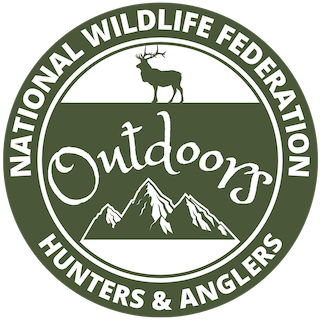National Wildlife Federation Outdoors On Preventing Habitat Loss For Wildlife

Some really good work being done by the National Wildlife Federation Outdoors to prevent a disturbing trend of habitat loss for wildlife. Here are some of the statistics courtesy of NWF:
During the 1800s, the U.S. nearly lost familiar species like mule deer, white-tailed deer, black bear, elk, pronghorn, and wild turkeys to unregulated hunting and market hunting. As populations rapidly declined, hunters led the way to their recovery by supporting ethical, regulated hunting practices. They successfully advocated for a self-imposed excise tax on firearms and ammunition that would return revenue to states for wildlife conservation. Just last year, hunters, anglers and recreational shooters contributed around $2 billion to conservation through the Pittman-Robertson, Dingell-Johnson, and Federal Duck Stamp programs, and through the purchase of hunting and fishing licenses.
But this success is at risk now due to a larger trend: development-driven habitat loss, including transportation and energy development, conversion to agriculture, and urban sprawl. It’s time for hunters and anglers to lead again so these same wildlife species do not suffer again.
America is losing nature at an unprecedented rate. According to a new analysis from the National Wildlife Federation and Conservation Science Partners, game species lost, on average, 6.5 million acres of vital habitat over the last two decades. This loss varies by species with some iconic species well exceeding the average. Mule deer, for example, lost over 7.3 million acres of their range, while wild turkey lost over 18.8 million acres.
Stressors like energy development and suburban sprawl are exacerbating the broader loss of wildlife and biodiversity, which jeopardizes the survival of sporting traditions, outdoor recreation-based economies, and the rural communities that depend on them.
In response to this crisis, a wide array of scientists have recommended that we conserve 30% of all lands and waters by 2030. This “30×30” target is publicly popular and relies on locally led, voluntary conservation measures. Most crucial to its success, however, is the acknowledgement that hunters and anglers are not only victims of nature loss, but also an integral part of the solution as highly effective conservationists. A 30×30 goal that honors the contributions, traditions, and access requirements of hunters can be successful in achieving genuine conservation outcomes.
The National Wildlife Federation and other groups in HuntFish30x30—a coalition of hunting, angling and fishing organizations and allies—have voiced support for 30×30 as a practical vision to conserve and restore wildlife habitat, increase opportunities, and ensure access to hunting and angling for all Americans. Most recently, the federal government has endorsed 30×30 in its “America The Beautiful” initiative with an explicit recognition of the role of hunters and anglers in its success. In keeping with this mission, for example, the Interior Department recently opened access to additional hunting and fishing on 2.1 million acres of National Wildlife Refuge lands in the largest expansion of outdoor recreation opportunities in years and re-engaged the Hunting and Wildlife Conservation advisory council.
You can keep up with the work the National Wildlife Federation organization is doing at its website. Click here for more.



